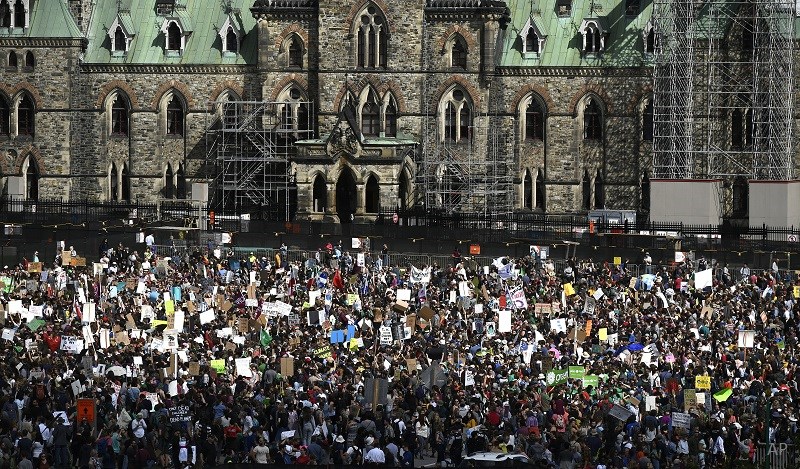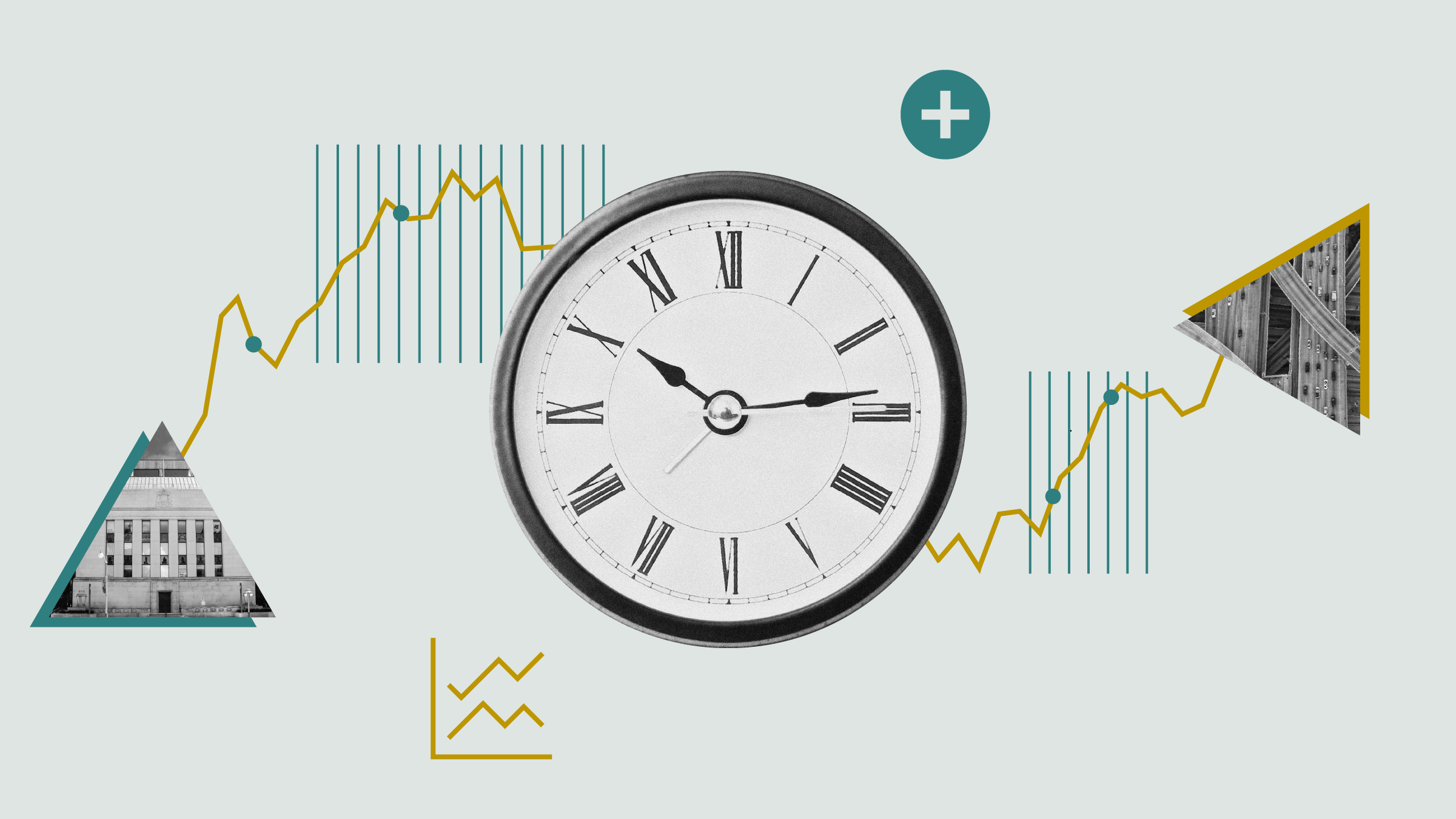
Off the heels of global protests, the debate and into the election this month, policies aimed at curbing climate change have taken the spotlight – with divisive receptions as emissions head off against the economy.
One thing that (most) parties have in common, is a consensus that us humans are behind climate change. But the approaches to the problems differ – with solutions to reducing emissions differing in vigor and economic implications.
With climate a top-tier election issue, the Liberals have been leaning on a plan to reduce emissions by 30% at 2030, the NDP upped that bet with a 38% reduction target, and the Green Party went all in at 60%.
The promises
But “anyone can have target policies,” says Mark Jaccard, professor of sustainable energy at Simon Fraser University’s School of Resource and Environmental Management. He also points out that we should not base judgement on aggressiveness, but on the balance the policies strike between economic and environmental benefits, and how the costs to tackle climate change are considered.
So what have the ruling Liberals proposed?
The Liberal platform
The Liberals have a plan that’s been ‘tried and tested’, including incentives for both consumers and business, from green vehicle subsidies, to individual tax rebates aimed at offsetting a carbon tax that rises $10 each year to $50 a tonne in 2022. However, by the government’s own data, this plan won’t meet 2030 targets.
The Liberals have pointed out that indirect initiatives including investments in public transit and new technologies haven’t been fully considered in today’s estimates. On the campaign trail, the Liberals also announced that companies that produce or develop those zero emissions technologies would get a 50% discount on their corporate taxes, a $2bn tree planting program would be implemented, and we’d be net zero emissions nationally by 2050.
But, you bought a pipeline
According to many, the New Democratic Party’s Jagmeet Singh won the final English language debate on October 7th, in part when he directly addressed Canadian voters as Trudeau and Conservative leader Andrew Scheer debated the climate, and carbon tax (more on that later), saying, “You don’t need to choose between Mr. Delay (Trudeau) and Mr. Deny (Scheer), there IS another option”.
He also reminded Trudeau, despite all his talk about tackling climate change:
“You. Bought. A. Pipeline.”
The NDP proposal is focused on communities impacted by climate change, including partnering with Indigenous people whose land may bear the pipeline. However, the NDP like the carbon tax. They would keep it and also maintain the schedule of rising carbon prices. The NDP plan also includes aggressive timelines to remove fossil fuels from Canada’s infrastructure and electricity grid.
But it’s the cost of the carbon tax that's causing concern.
The controversial carbon tax
Earlier this year, the Liberals imposed a carbon tax of $20 per tonne on New Brunswick, Ontario, Manitoba and Saskatchewan on April 1 as those four provinces hadn’t yet established a carbon pricing system.
Alberta didn’t need to be compelled. It came out with a rate of $30 per tonne. And in fact, Jaccard points out, they acted against coal before PM Justin Trudeau did. They were also ahead of Ontario when it came to investments in wind and natural gas. It made business sense, and Alberta got it.
There is “zero cost to scaling back coal,” says Jaccard, and when it comes to further progress with solar and wind investments electors should be receptive given those transitions have become “really cheap.” “It will create jobs – energy production can still be in Alberta and Saskatchewan,” says Jaccard.
In fact, Canada’s energy sector has been making progress, reducing its carbon intensity by 13%, points out Joe Gemino, Morningstar’s sector analyst, and paradoxically, he expects a further 25% improvement when new technologies can be deployed on expanded pipelines.
But Conservative Party leader Andrew Scheer says things aren’t going well, and unless we take his route, we’re risking economic decline at the cost of climate action.
The Conservative anti-policy
Touted as economically beneficial and climate-friendly, experts say the Conservative platform is neither. “If you were sincere, you would have at least matched [the emissions caps that are currently in place],” says Jaccard.
The Conservatives have promised to abolish the “costly” carbon tax, and instead, have pledged a plan to invest in “clean technology development” using funds above an unknown threshold for polluters.
Assessing any environmental benefit from the plan only has analysts scratching their heads. “They would tell you what it was [if it was a carbon tax],” says Jaccard, instead “the best thing an independent analyst can do is assume it’s zero.” Jaccard, who sits on the UN’s advisory panel on climate change, modelled the impact of Scheer’s plan and found it would lead to increased emissions between 2020 and 2030. Less investment in renewables, and less sustainable returns. Not good for the economy.
The federal government is already protecting emissions-intensive, trade-exposed businesses using subsidies called output-based allocations (OBAs). The OBAs are tailored to varying industry emission levels, and Jennifer Winter, a professor of economics at the University of Calgary, says they are an effective complement to a carbon price as they maintain the incentive for producers to invest in production methods and facilities that are less emissions-intensive.
“Assuming the same approach [industry-based standards], I would classify the Liberal approach as having more economic benefit,” says Winter. “The Conservative platform requires firms to invest in technology, with a set dollar amount per tonne above the emissions threshold (the dollar amount is not stated). This means that emissions below the threshold will be unpriced [and uninvested], emitters will only face an incentive to reduce emissions once they have emissions higher than the threshold.”
The Green-est way
Canada needs a “war cabinet” in the fight against climate change, according to Green Party leader Elizabeth May, likening it to the same urgency faced in World War II.
The Green Party’s “Mission: Possible” keeps the carbon tax and its yearly increase of $10 a tonne, but the plan looks beyond the 2022 Liberal target to 2030, reaching $130 a tonne. It would also stop the pipeline expansions and ban hydraulic fracking.
Like the NDP, the Green Party looks to make the same changes to the electricity grid and Canada’s infrastructure, but they don't put a price tag on the plan and what kind of incentives will facilitate the changes.
Essential elements behind achieving the targets set out in the NDP and Green Party platforms are missing, says Jaccard.
Meanwhile, the People’s Party of Canada’s Maxime Bernier believes there is no climate emergency.



















